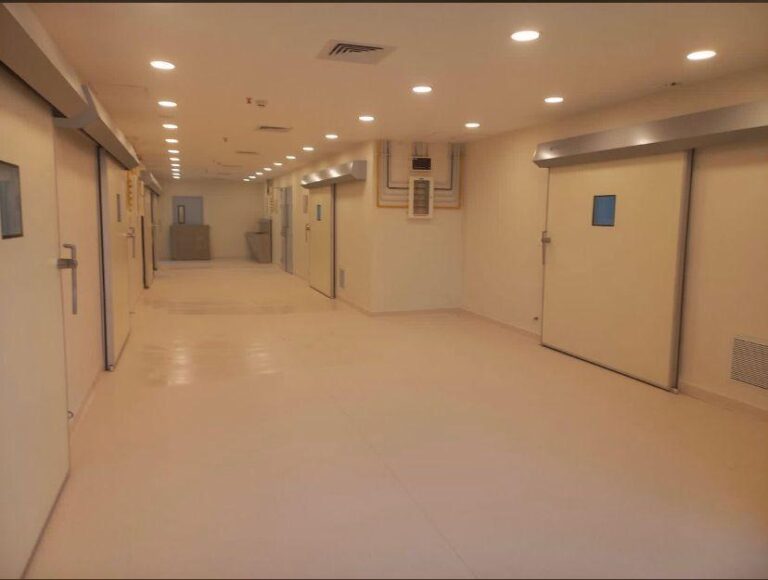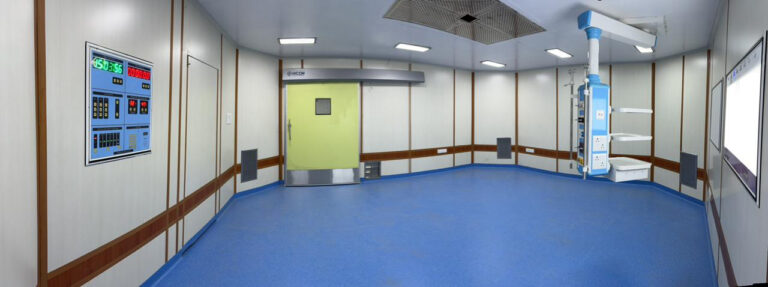In diagnostic imaging rooms, particularly those where X-rays, CT scans, and MRIs are used, protecting both patients and staff from harmful radiation is of utmost importance. One of the most effective ways to ensure radiation safety in these areas is by installing anti-radiation doors. These specialized doors are designed to block harmful radiation and provide a safe environment for medical professionals and patients.
In this blog, we’ll explore the key benefits of installing anti-radiation doors in diagnostic imaging rooms, highlighting why they are essential for modern healthcare facilities.
1. Enhanced Radiation Protection
The most obvious benefit of anti-radiation doors is their ability to protect individuals from the harmful effects of radiation. Diagnostic imaging procedures often involve high doses of radiation, which, when exposed to over time, can have serious health implications, including increased cancer risk. Anti-radiation doors are constructed with specialized materials, such as lead or lead-free composites, that effectively block radiation from escaping the imaging room.
These doors create a secure barrier, ensuring that the radiation stays within the designated area, protecting medical staff, patients, and visitors in adjacent rooms or hallways from potential exposure. This is particularly crucial in busy hospitals and diagnostic centers where numerous imaging procedures are performed daily.
2. Compliance with Health and Safety Regulations
Hospitals and diagnostic centers are required to adhere to strict health and safety standards, particularly when it comes to radiation exposure. Installing anti-radiation doors ensures compliance with national and international radiation safety guidelines, including those set by the Environmental Protection Agency (EPA), the World Health Organization (WHO), and other regulatory bodies. These regulations are in place to minimize the risks associated with radiation exposure, and anti-radiation doors are a vital part of meeting those standards.
By installing these doors, healthcare facilities demonstrate a commitment to providing a safe environment for both patients and medical professionals, minimizing the potential for accidents or violations of safety standards.
3. Protection of Medical Equipment
In addition to protecting people, anti-radiation doors can also help protect sensitive medical equipment from radiation exposure. Prolonged radiation exposure can negatively affect diagnostic equipment, leading to malfunctions, reduced accuracy, and increased maintenance costs. Anti-radiation doors serve as an effective shield, preserving the integrity and lifespan of expensive diagnostic machinery.
By safeguarding both the people and equipment within diagnostic imaging rooms, these doors help healthcare facilities save on long-term maintenance and equipment replacement costs.
4. Increased Efficiency in the Workplace
With anti-radiation doors in place, medical staff can work more efficiently, knowing that the radiation levels are controlled and that their exposure is minimized. This allows healthcare providers to focus on performing their duties and providing care to patients without worrying about radiation risks.
Furthermore, anti-radiation doors can help in the optimization of workflow. In imaging rooms with automated systems, these doors can be equipped with sensor technology to ensure smooth operation without compromising safety. In turn, this can enhance the overall patient experience by reducing wait times and improving the efficiency of diagnostic processes.
5. Improved Patient Comfort
Patients undergoing diagnostic imaging often experience anxiety due to the procedures’ nature. The presence of anti-radiation doors adds an extra layer of comfort, as patients can rest assured that every effort is being made to ensure their safety during the procedure. The fact that these doors are specifically designed for radiation protection makes it clear that the healthcare facility prioritizes patient health and safety, which can help alleviate some of the stress patients may feel.
Moreover, anti-radiation doors also contribute to creating a more controlled and quiet environment. They can be designed to close automatically and have noise-reducing features, further enhancing the overall patient experience during diagnostic imaging.
6. Durability and Longevity
Anti-radiation doors are built to last. They are constructed from high-quality materials that can withstand the heavy use typical in medical facilities. These doors are designed for durability, ensuring they continue to provide effective protection against radiation for many years without needing frequent replacements.
The robustness of these doors means they can withstand the wear and tear that comes with daily use in high-traffic areas like diagnostic imaging rooms, helping healthcare facilities maintain a long-term, reliable solution for radiation safety.
Conclusion
In the fast-paced and high-stakes environment of healthcare, ensuring the safety of both patients and medical professionals is crucial. Installing anti-radiation doors in diagnostic imaging rooms is a simple yet highly effective way to provide protection against harmful radiation. These doors offer numerous benefits, from enhancing safety and compliance with regulations to protecting expensive medical equipment and improving patient comfort.
For healthcare facilities looking to invest in radiation protection, HIKOM International LLP offers top-of-the-line anti-radiation doors designed to meet the highest industry standards. By choosing HIKOM International LLP, you can ensure that your diagnostic imaging rooms are equipped with the best in radiation safety technology, helping safeguard both the people and equipment that are essential to providing high-quality medical care.


